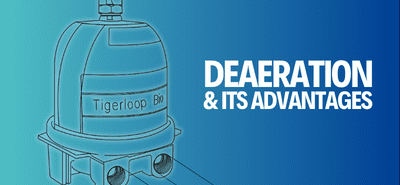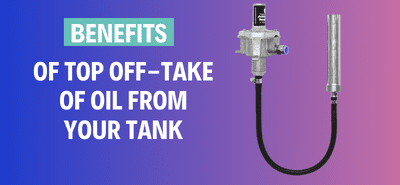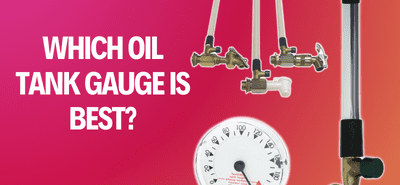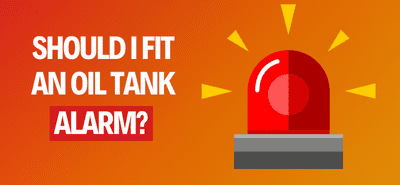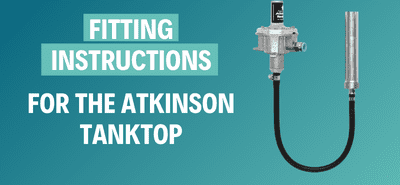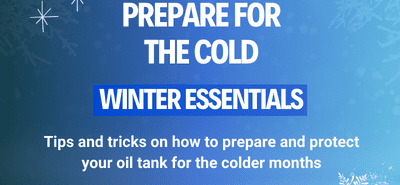Prepare Your Oil Tank For The Colder Months
Top Tips for Preparing Your Oil Heating Tank for Winter
Winter is coming and ensuring your oil heating tank is ready can save you from unexpected breakdowns and high energy bills. Follow these expert tips to prepare your oil tank for the colder months and keep your home warm and cozy all season long.

1. Visually Inspect Your Tank for Damage
Before the cold weather sets in, take the time to visually inspect your oil heating tank for any signs of damage. Look for cracks, rust, or any other structural issues that could potentially lead to leaks or system failures.
If you spot any damage, it’s crucial to address it immediately. Small issues can quickly escalate in the winter months, when your heating system will be working overtime. Consider hiring a professional to conduct a thorough inspection and make any necessary repairs.
Doing this will:
- Prevent Leaks: Avoid wasted fuel and environment hazards
- Ensure safety: Reduce fire and explosion risks
- Avoid costs: Catch small issues before they become expensive repairs
- Protect the environment: Prevent oil spills and contamination
Note: To report an oil spill, you should contact the Environment Agency’s 24 hour incident hotline on 0800 80 70 60
2. Service / Replace your filters
The efficiency of your oil heating system relies heavily on clean filters. Over time, filters can become clogged with dirt and debris, which can prevent the flow of oil and reduce the system’s efficiency.
Before winter arrives, either service your existing filters or replace them entirely. This simple maintenance task can not only improve the efficiency of your system but also extend its lifespan, saving you money in the long run. We supply spare filter elements for all of our filters, including the Atkinson Tankmaster Filter Replacement Kit, Tankmaster Service Kit, Replacement Filter Kit for Tanktop and more, making it easy for you to do from home. We have a useful video guide on How To Replace Your Tankmaster Filter.

3. Water Protection
Water in your oil tank can lead to a host of problems, including corrosion and bacterial growth. When preparing your oil tank for the colder months, water protection is really important to consider.
Water accumulation in your heating oil tank is often caused by condensation, particularly during the spring and summer months. This happens when cold water vapor meets a warm surface. As the weather heats up, the tank’s internal temperature remains cooler than the outside air, causing moist air inside to cool and form water droplets.
These water droplets collect on the inner walls of the tank and gradually drip down to the bottom. Since water is denser and heavier than oil, it settles at the bottom of the tank, forming a layer of water. This can become a bigger issue when the tank is partially filled, as a larger volume of air inside the tank increases the likelihood of condensation forming.
Letting your tank run low on fuel creates more space for air to enter, raising the humidity level inside the tank and further increasing the chance of water accumulation through condensation. If left unchecked, this water buildup can lead to tank corrosion, clogging of the oil lines, and damage to the heating system. Regular maintenance can help reduce the risk of water formation.
To protect your tank, consider installing a Water Trap Filter or using our Water Soaking Oil Tank Sponge. Regularly checking for and removing any water can prevent damage and keep your system running smoothly. We also offer a Water Finding Paste which can be used if you are unsure how much water you have in your tank. It may be worth checking out our Water Removal Kits which will include everything you need for to protect your oil heating tank from water.
- Water Soaking Oil Tank Sponge: This is a great solution if you have a small amount of water in your oil tank. The Oil Tank Sponge is weighted so that it lays flat on the bottom of your tank. Containing super absorbent polymer which soaks up any water but is impervious to fuel.
- Kolor Kut Water Finding Paste: A helpful tool used to check for water in your oil tank. This is used by applying to a rod / length of string with a bottom weight, the brown paste changes colour to a brilliant red when it comes into contact with water, giving you a visual indication as to the depth of the water present.
- Submersible Pump: This is the last line of defence against an oil heating tank with a water issue. The pump comes with 4 metre cables and crocodile clips. It has a standard garden hose outlet and a clip on filter. They can be dropped into the tank to remove the water from the bottom of the tank.
- Inline Water Trap Filter: This water filter allows you to easily drain off any water collected from your heating oil. Comprising of a clear bowl and drain point so you can easily monitor and remove any water build up within the filter. When you see any water in the filter bowl, simply open a valve to drain this off. This will keep water out of your tank.

4. Check Your Fire Prevention with Fire Valves
Fire safety is paramount when dealing with oil heating systems. Ensure that your fire valves are in good working order and properly installed. These valves are designed to cut off the oil supply in the event of a fire, preventing the spread of flames.
Regularly test your fire prevention equipment and replace any faulty components. This small step can make a significant difference in the safety of your home and family.
Check that your Fire Valves are isolating and resetting properly to protect your home.
Our FuelStop Fire Valves are available with: 1.5m – 35m Capillary length (depends on model) & Temperature Ranges: 66°C to 72°C and 86°C to 95°C.

5. Secure Your Tank Against Oil Theft
Oil theft is an unfortunate reality, especially during the winter months when heating oil is in high demand. Take measures to secure your tank and protect your investment.
Consider installing a Locking Filler Cap or Locking Vent Cap on your oil tank’s fill and vent caps, and add security lighting or cameras around the area. Regularly check for any signs of tampering and report suspicious activity to the authorities. Read our useful blog on Protecting Your Heating Oil From Theft for more useful information.
6. Monitor Oil Levels and Refill Timely
Running out of oil in the middle of winter can be more than just an inconvenience; it can be a costly and uncomfortable experience. To avoid this, keep a close eye on your oil levels using our contents gauges and plan for timely refills.
Ensuring that your tank gauges are functioning properly is crucial for accurately monitoring your oil levels. If the gauges are faulty or not working at all, you won’t have a reliable way to know how much oil you have or when to refill. It’s important to regularly inspect your gauges for any signs of damage, such as cracks, loose connections, or abnormal readings, especially as colder months approach. The last thing you want is to run out of fuel unexpectedly and scramble to arrange a delivery when you need it most.
Set reminders to check your tank regularly and establish a relationship with a reliable oil supplier. Ordering oil in advance can help you avoid price spikes during peak demand periods and ensure you stay warm all winter long.
We have hand picked a range of products that will be useful to you when preparing your oil heating tank for winter in our Winter Essentials collection. If you require any more in depth information, please contact our technical team who can assist you with any questions you may have, and they will be able to advise you the best route to solution.

